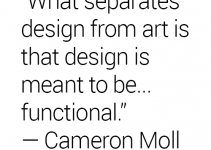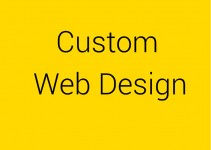 WordPress Web Design in the Philippines
WordPress Web Design in the Philippines
WordPress started in 2003 with a single bit of code to enhance the typography of everyday writing and with fewer users than you can count on your fingers and toes. Since then it has grown to be the largest self-hosted blogging tool in the world, used on millions of sites and seen by tens of millions of people every day.
Everything you see here, from the documentation to the code itself, was created by and for the community. WordPress is an Open Source project, which means there are hundreds of people all over the world working on it. (More than most commercial platforms.) It also means you are free to use it for anything from your recipe site to a Fortune 500 web site without paying anyone a license fee and a number of other important freedoms.
About WordPress.org
On this site you can download and install a software script called WordPress. To do this you need a web host who meets the minimum requirements and a little time. WordPress is completely customizable and can be used for almost anything. There is also a service called WordPress.com which lets you get started with a new and free WordPress-based blog in seconds, but varies in several ways and is less flexible than the WordPress you download and install yourself.
What You Can Use WordPress For
WordPress started as just a blogging system, but has evolved to be used as full content management system and so much more through the thousands of plugins and widgets and themes, WordPress is limited only by your imagination. (And tech chops.)
Connect with the Community
In addition to online resources like the forums and mailing lists a great way to get involved with WordPress is to attend or volunteer at a WordCamp, which are free or low-cost events that happen all around the world to gather and educate WordPress users, organized by WordPress users. Check out the website, there might be a WordCamp near you.
A Little History
WordPress was born out of a desire for an elegant, well-architectured personal publishing system built on PHP and MySQL and licensed under the GPLv2 (or later). It is the official successor of b2/cafelog. WordPress is fresh software, but its roots and development go back to 2001. It is a mature and stable product. We hope by focusing on user experience and web standards we can create a tool different from anything else out there.
Web design
Web design encompasses many different skills and disciplines in the production and maintenance of websites. The different areas of web design include web graphic design; interface design; authoring, including standardised code and proprietary software; user experience design; and search engine optimization. Often many individuals will work in teams covering different aspects of the design process, although some designers will cover them all.[1] The term web design is normally used to describe the design process relating to the front-end (client side) design of a website including writing mark up. Web design partially overlaps web engineering in the broader scope of web development. Web designers are expected to have an awareness of usability and if their role involves creating mark up then they are also expected to be up to date with web accessibility guidelines.
Elements
Marketing and communication design
Marketing and communication design on a website may identify what works for its target market. This can be an age group or particular strand of culture; thus the designer may understand the trends of its audience. Designers may also understand the type of website they are designing, meaning, for example, that (B2B) business-to-business website design considerations might differ greatly from a consumer targeted website such as a retail or entertainment website. Careful consideration might be made to ensure that the aesthetics or overall design of a site do not clash with the clarity and accuracy of the content or the ease of web navigation, especially on a B2B website. Designers may also consider the reputation of the owner or business the site is representing to make sure they are portrayed favourably.
User experience design and interactive design
User understanding of the content of a website often depends on user understanding of how the website works. This is part of the user experience design. User experience is related to layout, clear instructions and labeling on a website. How well a user understands how they can interact on a site may also depend on the interactive design of the site. If a user perceives the usefulness of the website, they are more likely to continue using it. Users who are skilled and well versed with website use may find a more unique, yet less intuitive or less user-friendly website interface useful nonetheless. However, users with less experience are less likely to see the advantages or usefulness of a less intuitive website interface. This drives the trend for a more universal user experience and ease of access to accommodate as many users as possible regardless of user skill. Much of the user experience design and interactive design are considered in the user interface design.
Advanced interactive functions may require plug-ins if not advanced coding language skills. Choosing whether or not to use interactivity that requires plug-ins is a critical decision in user experience design. If the plug-in doesn’t come pre-installed with most browsers, there’s a risk that the user will have neither the know how or the patience to install a plug-in just to access the content. If the function requires advanced coding language skills, it may be too costly in either time or money to code compared to the amount of enhancement the function will add to the user experience. There’s also a risk that advanced interactivity may be incompatible with older browsers or hardware configurations. Publishing a function that doesn’t work reliably is potentially worse for the user experience than making no attempt. It depends on the target audience if it’s likely to be needed or worth any risks.
Page layout
Part of the user interface design is affected by the quality of the page layout. For example, a designer may consider whether the site’s page layout should remain consistent on different pages when designing the layout. Page pixel width may also be considered vital for aligning objects in the layout design. The most popular fixed-width websites generally have the same set width to match the current most popular browser window, at the current most popular screen resolution, on the current most popular monitor size. Most pages are also center-aligned for concerns of aesthetics on larger screens.
Fluid layouts increased in popularity around 2000 as an alternative to HTML-table-based layouts and grid-based design in both page layout design principle and in coding technique, but were very slow to be adopted.[note 1] This was due to considerations of screen reading devices and varying windows sizes which designers have no control over. Accordingly, a design may be broken down into units (sidebars, content blocks, embedded advertising areas, navigation areas) that are sent to the browser and which will be fitted into the display window by the browser, as best it can. As the browser does recognize the details of the reader’s screen (window size, font size relative to window etc.) the browser can make user-specific layout adjustments to fluid layouts, but not fixed-width layouts. Although such a display may often change the relative position of major content units, sidebars may be displaced below body text rather than to the side of it. This is a more flexible display than a hard-coded grid-based layout that doesn’t fit the device window. In particular, the relative position of content blocks may change while leaving the content within the block unaffected. This also minimizes the user’s need to horizontally scroll the page.
Responsive Web Design is a newer approach, based on CSS3, and a deeper level of per-device specification within the page’s stylesheet through an enhanced use of the CSS @media rule.
Typography
Web designers may choose to limit the variety of website typefaces to only a few which are of a similar style, instead of using a wide range of typefaces or type styles. Most browsers recognize a specific number of safe fonts, which designers mainly use in order to avoid complications.
Font downloading was later included in the CSS3 fonts module and has since been implemented in Safari 3.1, Opera 10 and Mozilla Firefox 3.5. This has subsequently increased interest in web typography, as well as the usage of font downloading.
Most site layouts incorporate negative space to break the text up into paragraphs and also avoid center-aligned text.
Motion graphics
The page layout and user interface may also be affected by the use of motion graphics. The choice of whether or not to use motion graphics may depend on the target market for the website. Motion graphics may be expected or at least better received with an entertainment-oriented website. However, a website target audience with a more serious or formal interest (such as business, community, or government) might find animations unnecessary and distracting if only for entertainment or decoration purposes. This doesn’t mean that more serious content couldn’t be enhanced with animated or video presentations that is relevant to the content. In either case, motion graphic design may make the difference between more effective visuals or distracting visuals.
Motion graphics that are not initiated by the site visitor can produce accessibility issues. The World Wide Web consortium accessibility standards require that site visitors be able to disable the animations.
Quality of code
Website designers may consider it to be good practice to conform to standards. This is usually done via a description specifying what the element is doing. Failure to conform to standards may not make a website unusable or error prone, but standards can relate to the correct layout of pages for readability as well making sure coded elements are closed appropriately. This includes errors in code, more organized layout for code, and making sure IDs and classes are identified properly. Poorly-coded pages are sometimes colloquially called tag soup. Validating via W3C[7] can only be done when a correct DOCTYPE declaration is made, which is used to highlight errors in code. The system identifies the errors and areas that do not conform to web design standards. This information can then be corrected by the user.
_________________________________
Sources:
Philwebservices Inc. is an outsourcing company in the Philippines that offers services in web design and development, SEO, social media marketing, and web hosting.


